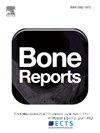Long-term effects of infrapatellar fat pad SVF infiltration in knee osteoarthritis management: A prospective cohort study
IF 2.6
Q3 ENDOCRINOLOGY & METABOLISM
引用次数: 0
Abstract
Background
Knee osteoarthritis (OA) is a prevalent and debilitating condition that significantly impacts patients' quality of life and poses a substantial socioeconomic burden. Current treatments, including nonsteroidal anti-inflammatory drugs (NSAIDs) and physical therapy, often provide only temporary relief and fail to halt disease progression, particularly in advanced stages where knee replacement surgery becomes the primary option. Regenerative cell therapies, particularly those utilizing mesenchymal stem cells (MSCs), have emerged as promising alternatives due to their anti-inflammatory and regenerative properties. This study investigates the efficacy of stromal vascular fraction (SVF) derived from autologous adipose tissue when injected into the infrapatellar (Hoffa's) fat pad, an approach that leverages the rich vascular and stem cell environment of the fat pad to potentially modulate inflammation and promote tissue repair.
Methods
Patients receiving therapy with SVF were invited to participate in the study. Inclusion criteria encompassed male and female patients aged 18 years or older with a Kellgren-Lawrence score up to 4, while exclusion criteria included malignant tumors, sepsis, or skin lesions at the site of collection or injection. A total of 25 patients were included in the study cohort, with two patients receiving bilateral treatment, resulting in 27 knees analyzed.
For the correlation analysis, an additional four patients who had only completed the six-month follow-up were included, one of whom underwent bilateral treatment. This extended the correlation analysis cohort to 29 patients and 32 knees. However, these four patients were excluded from the final study analysis as they had not completed the two-year follow-up. Consequently, the final analysis focused exclusively on the 25 patients (27 knees) who completed the full two-year follow-up.
Results
Significant improvements were observed in VAS pain scores and KOOS subscales for pain, activities of daily living (ADL), and quality of life (QOL) at 6 and 24 months (p < 0.05). The correlation between the number of injected cells and functional improvements was significant for ADL at 6 months (Spearman's rho = 0.31, p = 0.044). This time point was prioritized to evaluate early therapeutic responses, as it represents a critical window when cellular activity and therapeutic effects are believed to peak. Focusing on the six-month follow-up allowed for a detailed assessment of these early impacts while minimizing potential confounding factors observed in later stages. No major complications were reported.
Conclusion
SVF infiltration into the infrapatellar fat pad shows promising long-term benefits in pain relief and functional improvement for knee OA patients. Despite the lack of blinding and a control group, these findings suggest that SVF therapy could be a viable minimally invasive alternative to more invasive surgical interventions.
髌下脂肪垫SVF浸润对膝关节骨关节炎治疗的长期影响:一项前瞻性队列研究
膝关节骨性关节炎(OA)是一种普遍且使人衰弱的疾病,严重影响患者的生活质量,并造成严重的社会经济负担。目前的治疗方法,包括非甾体抗炎药(NSAIDs)和物理治疗,通常只能提供暂时的缓解,不能阻止疾病的进展,特别是在膝关节置换手术成为主要选择的晚期。再生细胞疗法,特别是利用间充质干细胞(MSCs)的疗法,由于其抗炎和再生特性而成为有希望的替代疗法。本研究研究了自体脂肪组织衍生的基质血管组分(SVF)注射到髌下(Hoffa’s)脂肪垫后的疗效,这种方法利用脂肪垫丰富的血管和干细胞环境来调节炎症和促进组织修复。方法邀请接受SVF治疗的患者参与研究。纳入标准包括年龄≥18岁且kelgren - lawrence评分≥4的男性和女性患者,排除标准包括恶性肿瘤、败血症或采集或注射部位的皮肤病变。研究队列共纳入25例患者,其中2例患者接受双侧治疗,共分析27个膝关节。为了进行相关性分析,另外4名患者只完成了6个月的随访,其中1名接受了双侧治疗。这将相关分析队列扩展到29名患者和32个膝关节。然而,这4例患者因未完成2年随访而被排除在最终研究分析之外。因此,最终的分析集中在25名患者(27个膝关节),他们完成了为期两年的随访。结果在6个月和24个月时,两组患者的VAS疼痛评分和kos疼痛亚量表、日常生活活动(ADL)和生活质量(QOL)均有显著改善(p <;0.05)。注射细胞数与6个月时ADL功能改善之间的相关性显著(Spearman’s rho = 0.31, p = 0.044)。这个时间点被优先用于评估早期治疗反应,因为它代表了细胞活动和治疗效果达到峰值的关键窗口。关注六个月的随访可以详细评估这些早期影响,同时最大限度地减少后期观察到的潜在混杂因素。无重大并发症报道。结论svf浸润髌下脂肪垫对膝关节OA患者的疼痛缓解和功能改善具有远期疗效。尽管缺乏盲法和对照组,这些研究结果表明,SVF治疗可能是一种可行的微创替代更具侵入性的手术干预。
本文章由计算机程序翻译,如有差异,请以英文原文为准。
求助全文
约1分钟内获得全文
求助全文
来源期刊

Bone Reports
Medicine-Orthopedics and Sports Medicine
CiteScore
4.30
自引率
4.00%
发文量
444
审稿时长
57 days
期刊介绍:
Bone Reports is an interdisciplinary forum for the rapid publication of Original Research Articles and Case Reports across basic, translational and clinical aspects of bone and mineral metabolism. The journal publishes papers that are scientifically sound, with the peer review process focused principally on verifying sound methodologies, and correct data analysis and interpretation. We welcome studies either replicating or failing to replicate a previous study, and null findings. We fulfil a critical and current need to enhance research by publishing reproducibility studies and null findings.
 求助内容:
求助内容: 应助结果提醒方式:
应助结果提醒方式:


